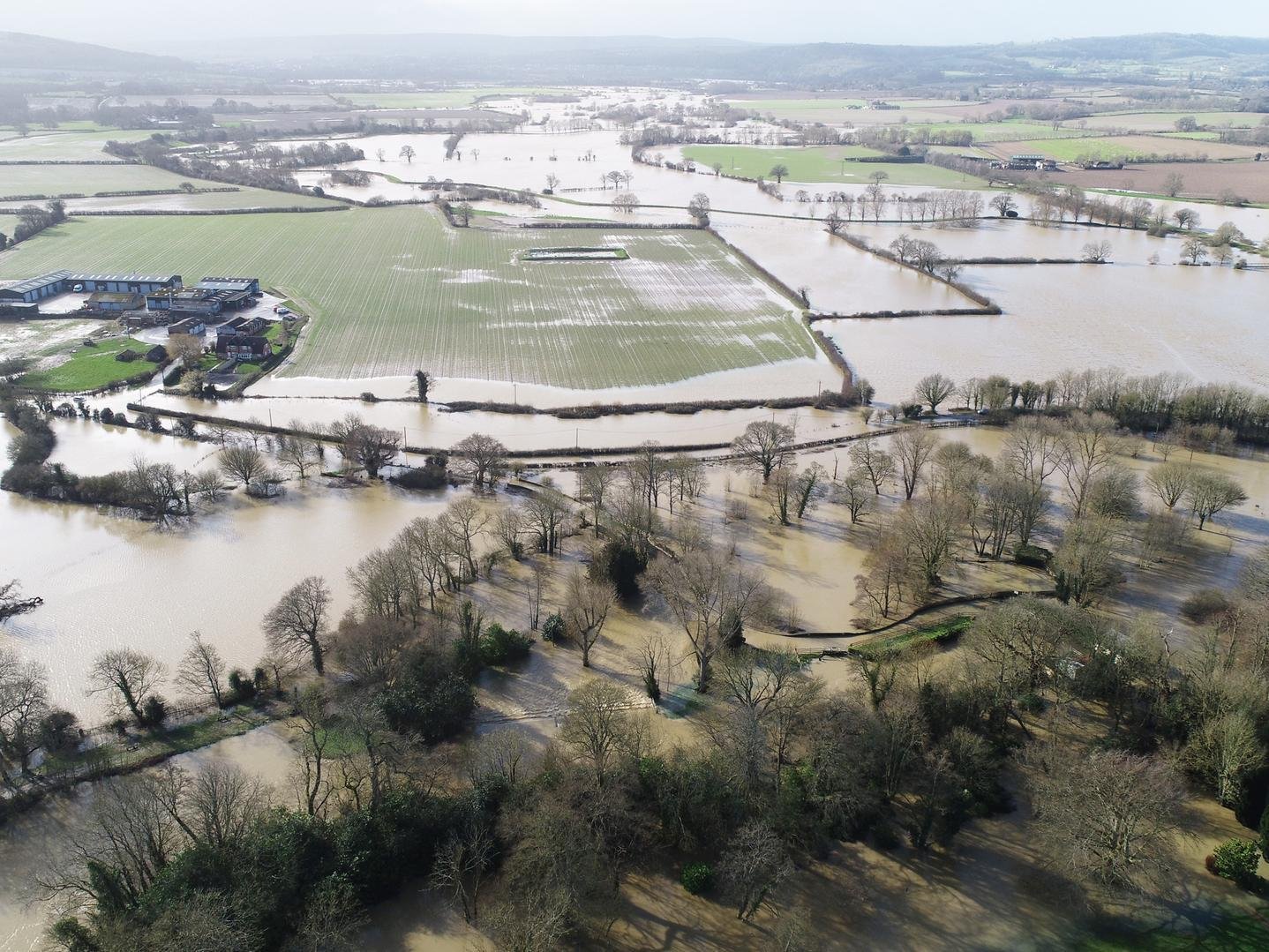What’s a Leaky Dam?
A seasonal watercourse with leaky dams inserted
“It is coming up to leaky dam building time again (in fact any time is leaky dam building time but I'm going to be doing it next week with a group of Icelandic teachers at Wilderness Wood). It is always fun explaining to people what a leaky dam is since it is something of an oxymoron.”
“Why do we want to build a dam that leaks? Surely the point of a dam is that it doesn't?”
“Well, think of it as a colander, rather than a bowl. A colander is a leaky bowl – but it's leakiness is a virtue. The virtue of a leaky dam is to 'strain' nature's waters a little. Mostly you are looking to slow-down water flow in a stream, rather than holding it back completely. You are also looking to strain out the leaves, branches and sediment that might be passing downstream. This means none of these bits and pieces end up in lowland rivers causing them to become choked and over-topping their banks ie. Flooding.”
The Sussex Ouse in Flood - 2000 (Sussex Express)
“OK I can see why you might want to hold back leaves and sediment, but why hold back the water?”
“The basin hydrological cycle (that's posh for water travelling between where rainfall hits the ground/trees down to the sea) is a natural process. Mother Nature has got everything in her garden sorted out, for example dead trees, branches and leaves are allowed to fall into upland streams to reduce flooding downstream. However, she has a rather irritating neighbour (Human-kind) who keeps messing things up in her garden.
He cleans out anything falling into streams (except shopping trolleys outside Tesco's, which for some reason are left there). He also cuts down trees in upland areas, so that he can graze sheep and also so that 'Hurrah-Henrys' can shoot deer and grouse – just for fun. All this bad neighbour stuff upsets Mother Nature because when it rains all her lowland rivers start flooding.”
“How does chopping down upland trees cause lowland river flooding then?”
“As with everything else about Man, it's to do with speed. Mother Nature thought she had got it all sorted out, including the speed with which water is allowed to travel downstream. Too fast and all the rainwater arrives at the lowland rivers at the same time. So trees, soil, dead branches and leaves in streams, all help slow the rainwater down”
“But surely if you let the water go downstream quickly you get it all out of the way more quickly?”
“Imagine if you would, the end of a Brighton and Hove Albion football match. 40,000 football fans all want to leave at the same time. If not managed carefully it can lead to problems of crushing in the stadium, as well as lots of traffic problems on the roads and railways. Mayhem! The same happens if upland water (where incidentally most rain falls) all arrives at the same time at the lowland rivers.”
“Mayhem?”
“Yep, the mass flooding of local towns like Uckfield and Lewes in 2000.”
“OK, I can understand the need to slow upstream water down now. So tell me how to build a leaky dam.”
“There are lots of different ways. Some people like to drive stakes in across the stream channel and then nail planks across with gaps between the planks. Others put piles of logs, or even tree trunks across the channel. Piles of brushwood tied together and stuffed into the channel work well, especially if pinned down in some way. It is a matter of what's available or what you can afford.”
A rather posh leaky dam - Shropshire Wildlife Trust
“So what's your preference at Wilderness Wood?“
“We have lots of younger poles available from 2, 3 or 4 year old coppice stools. So we cut the thicker bottoms of these to make stakes which we drive in a line across the stream channel, followed by weaving the green upper parts of the pole between the stakes to make a kind of hurdle. We also build log dams when there are plenty of bigger logs about, or a hybrid of these. We call the hurdles “woven beauties.”
Coppiced poles harvested at Wilderness Wood
“Why woven beauties?”
“Judge for yourself.”
"A ‘woven beauty’ leaky dam
If you want to read about my walking and cycling travels around the UK visit www.leggingroundbritain.com.






